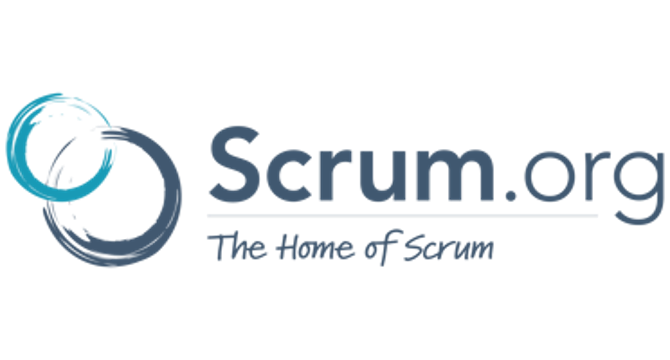Agile Methodology News
Testim.io
321

Image Credit: Testim.io
Javascript Code Smells: 7 to Watch out For
- Code smells are signs in your code that indicate potential deeper problems and should be investigated and addressed to improve code quality.
- Defining JavaScript code smells helps developers identify warning signs in their code that might indicate underlying issues.
- Some common JavaScript code smells include too many indentation levels, long functions, too many parameters, complex code, copy-pasted code, wrong use of equality, and comments or dead code.
- Excessive indentation levels can make code harder to read and understand, leading to maintenance challenges.
- Long functions are more challenging to troubleshoot and understand, so keeping them concise is essential for code maintainability.
- Functions with too many parameters can be harder to work with and may indicate a need for refactoring to simplify the code.
- High cyclomatic complexity in code can make it difficult to reason about and test effectively, impacting code quality.
- Avoiding copy-pasted code and ensuring proper use of equality operators can help maintain code clarity and prevent errors.
- Removing unnecessary comments and dead code is important for keeping code documentation accurate and minimizing confusion.
- Being aware of and addressing these code smells can lead to improved JavaScript codebases through refactoring and adopting best practices.
Read Full Article
19 Likes
Scrum-Master-Toolbox
397

Anuj Ojha: Helping Product Owners Move Beyond User Story Templates to True Customer Understanding
- Anuj Ojha discusses the importance of moving beyond user story templates to true customer understanding for Product Owners.
- An exemplary Product Owner excels at inclusive product development, focusing on the vision and problem space while allowing team members to explore solutions.
- Common anti-patterns observed in Product Owners include creating user stories without understanding customer needs and relying too heavily on story templates.
- To transition from being a requirements translator to a value maximizer, Product Owners should engage directly with customers, focus on problem exploration, and collaborate with the entire team.
Read Full Article
23 Likes
Scrum
149

Image Credit: Scrum
Stakeholders in Scrum: Who They Really Are (And Who You Might Be Missing)
- The role of stakeholders is emphasized in the Scrum Guide.
- Stakeholders are not just limited to management, but include users, customers, competitors, and others.
- Knowing and understanding stakeholders is crucial to meeting requirements and expectations.
- Missing stakeholders can lead to missed feedback and building something no one wants.
Read Full Article
8 Likes
Scrum-Master-Toolbox
36

Anuj Ojha: Building Agile Team Maturity Through Honest Feedback
- Anuj Ojha emphasizes the danger of viewing Scrum as a universal solution and behaving like a 'cult master'.
- He advises against manipulating conversations or using others' authority to validate decisions.
- Anuj promotes viewing Scrum as a continuous PDCA cycle and maintaining an open mind about different approaches.
- Anuj recommends a team shared self-evaluation retrospective format to build interpersonal relationships through structured feedback.
Read Full Article
2 Likes
Discover more
- Programming News
- Software News
- Web Design
- Devops News
- Open Source News
- Databases
- Cloud News
- Product Management News
- Operating Systems News
- Computer Engineering
- Startup News
- Cryptocurrency News
- Technology News
- Blockchain News
- Data Science News
- AR News
- Apple News
- Cyber Security News
- Leadership News
- Gaming News
- Automobiles News
Scrum
54

Image Credit: Scrum
The anti-patterns of a Product Owner
- Product Owners play a crucial role in creating valuable products, but ineffective Product Owners can lead to challenges and product failures.
- Anti-patterns of Product Owners include Proxy Product Owner, Inaccessible Product Owner, Feature Factory Product Owner, and Product Owner with a Changing Scope of Work.
- Proxy Product Owners become bottlenecks, while Inaccessible Product Owners hinder team progress by being unavailable for clarifications.
- Feature Factory Product Owners focus solely on releasing features, often neglecting user value, clarity of product vision, and team engagement.
- Product Owners with a constantly changing scope disrupt team plans and lead to stress and burnout among team members.
- Product Owners who cater to all stakeholder demands without discernment can end up with unrealistic expectations and loss of credibility.
- Overly Technical Product Owners who micromanage technical implementations hinder team ownership and can deviate from maximizing product value.
- Dictatorial Product Owners make decisions unilaterally, demoralizing the team and inhibiting creativity and problem-solving.
- Breaking free from these anti-patterns involves training, learning, mentoring, and coaching Product Owners to empower them to make effective decisions.
- By addressing these anti-patterns, organizations can enable Product Owners to guide teams effectively and deliver products that meet customer needs.
Read Full Article
3 Likes
Dev
163

Image Credit: Dev
Introduction to Agile Framework
- Introduction to Agile Framework
- Agile is a structured approach for applying Agile principles in project management and software development.
- Key terms in Agile framework include user story, product backlog, sprint, epic, Scrum Master, Product Owner, and development team.
- There are various types of Agile methodologies like Scrum, Kanban, Lean, Extreme Programming (XP), Feature-Driven Development (FDD), Dynamic Systems Development Method (DSDM), Crystal, and Agile Unified Process (AUP).
Read Full Article
9 Likes
Medium
407

Image Credit: Medium
There’s nothing wrong with waterfall
- The original 'Manifesto for Agile Software Development' was a response to the deterministic nature of the waterfall methodology.
- Agile treats software development as an ongoing process, taking advantage of product flexibility.
- The world has changed with the increased complexity of modern product suites and distributed teams.
- Waterfall works well for physical products, but software is more adaptable and can be updated even after deployment.
Read Full Article
24 Likes
Medium
439

Image Credit: Medium
Understanding Key Roles in Agile Teams
- The Product Owner (PO) is the voice of the customer and the key decision-maker when it comes to prioritizing work in an Agile team.
- The Scrum Master is a servant-leader responsible for ensuring that Agile principles and practices are followed within the team.
- The Development Team consists of professionals who work collaboratively to deliver working increments of the product.
- Stakeholders include executives, customers, business leaders, and other external parties who have an interest in the product and provide input to shape its direction.
Read Full Article
26 Likes
Scrum-Master-Toolbox
294

Anuj Ojha: Beyond the Iron Triangle, A Path to True Agility
- Anuj Ojha shares his journey of understanding the complexities behind Scrum implementation.
- He emphasizes the importance of effective communication with stakeholders.
- The traditional iron triangle (fixed time, scope, and resources) is a fiction in agile environments.
- Ojha suggests building cases for critical needs and ensuring all voices are heard when determining possibilities.
Read Full Article
17 Likes
Testim.io
312

Image Credit: Testim.io
Angular Testing Tutorial: What You Need and How to Start
- This Angular testing tutorial offers insights on how to start testing Angular for front-end developers, emphasizing the importance of testing in maintaining user trust.
- The tutorial covers the basics of Angular testing, including unit tests, end-to-end tests, and integration tests, explaining the differences and importance of each.
- Unit tests focus on verifying small pieces of an application in isolation, while end-to-end tests simulate user interactions with the application.
- The article introduces the testing pyramid as a guide for prioritizing unit, integration, and end-to-end tests, emphasizing the significance of unit tests as the foundation.
- It further delves into practical examples of unit testing Angular components and services using spies to mock dependencies and ensure test speed and maintenance.
- The tutorial also discusses end-to-end tests in Angular, highlighting the use of Protractor and emphasizing testing UI displays rather than specific data.
- Integration tests in Angular involve testing how components and services respond to different API responses, necessitating a fake server setup to serve test data.
- Various options for spinning up a data server for integration tests are outlined, such as using a back-end framework, ng-apimock, or Cypress.
- The tutorial provides steps for setting up integration tests with a framework like Express, involving creating a local server, configuring tests, and setting up a proxy in Angular.
- In conclusion, the article encourages implementing Angular testing across the testing pyramid with tools like Protractor and Jasmine, ensuring comprehensive test coverage for user satisfaction.
- By following the guidelines in this tutorial, developers can enhance their testing practices in Angular, leading to more stable and reliable applications for end-users.
Read Full Article
18 Likes
Medium
290

Image Credit: Medium
What is Agile Software Development?
- Agile software development prioritizes flexibility, collaboration, and iterative progress.
- It focuses on delivering small, working increments of software in short, time-boxed iterations called sprints.
- Agile values collaboration within the development team and with customers to ensure the product meets real-world needs.
- Agile methodologies like Scrum, Kanban, and Extreme Programming are used to implement Agile principles.
Read Full Article
17 Likes
Scrum
240

Image Credit: Scrum
Myth 39: Technical Debt is the Developers’ Problem
- Myth # 39: Technical Debt is the Developer's Problem. They caused it, so they should fix it on their own time.
- The Product Owner should be kept informed of Technical Debt by the Scrum Team and should add fixes for Technical Debt to the Product Backlog and order it along with new features.
- Teams should consider enhancements to their Definition of Done to reduce the accumulation of new technical debt.
- Developers should inform the Product Owner of any technical debt to ensure that fixes for Technical Debt are added to the Product Backlog.
Read Full Article
14 Likes
Medium
303
Image Credit: Medium
The Problem with Agile
- The Agile Manifesto was a concise document created by 17 software developers focusing on creating value for customers.
- Despite its original intent, Agile has evolved into a formal system with its own customs, jargons, and rituals, deviating from its core principle of value creation and adaptability.
- Agile has been criticized for turning into a cult-like culture, where common sense is obscured by strict rules and dogma.
- Andy Hunt, an original signatory, expressed disappointment in how Agile has become rigid and dogmatic, contrary to its initial purpose of using common sense over rules.
- Alistair Cockburn proposed simplifying Agile with the Heart of Agile, focusing on collaboration, delivery, reflection, and improvement as the core principles.
- Collaboration in Agile involves understanding the team and ensuring work adds value to users, rather than blindly following rituals like backlogs or daily stand-ups.
- Delivering value to customers is emphasized as the fundamental goal of Agile, requiring PMs to explore who the customers are and what value means to them.
- Reflection is deemed crucial in Agile, allowing teams to assess what works, why it works, and how it adds value, giving them a competitive edge.
- Improvement in Agile involves changing or discarding practices that do not contribute to value generation efficiently, even if they are considered 'good practices' within the framework.
- Agile is praised for promoting adaptability and value creation over rules and rituals, emphasizing the importance of independent thinking and collaboration.
Read Full Article
18 Likes
Medium
172

Image Credit: Medium
Mastering Large-Scale IT Projects: Aligning Expectations and Delivering Value
- To avoid misalignment between client needs and development outcomes, it is important to gather references, validate each stage with explicit approvals, and set clear expectations.
- Regular touchpoints and client engagement are essential for effective communication and project success.
- Transparency tools like task trackers and involving clients early in the process help build trust and shared ownership.
- Clarifying decision-makers, confirming approvals at every milestone, and engaging end users lead to better decision-making and successful product development.
Read Full Article
10 Likes
Medium
154
Image Credit: Medium
Release Channels: Beta, Stable, and Long-Term Support (LTS)
- Release channels help manage software updates by offering different versions to different groups.
- Alpha channel: The earliest phase of software testing, used by developers or internal teams to gather feedback.
- Beta channel: Allows a select group of users to try out new features and identify bugs early on.
- Stable channel: Fully tested and polished version of the software available to general users.
- LTS channel: Aimed at users who prioritize stability, receiving security patches and critical bug fixes over a long period.
Read Full Article
9 Likes
For uninterrupted reading, download the app